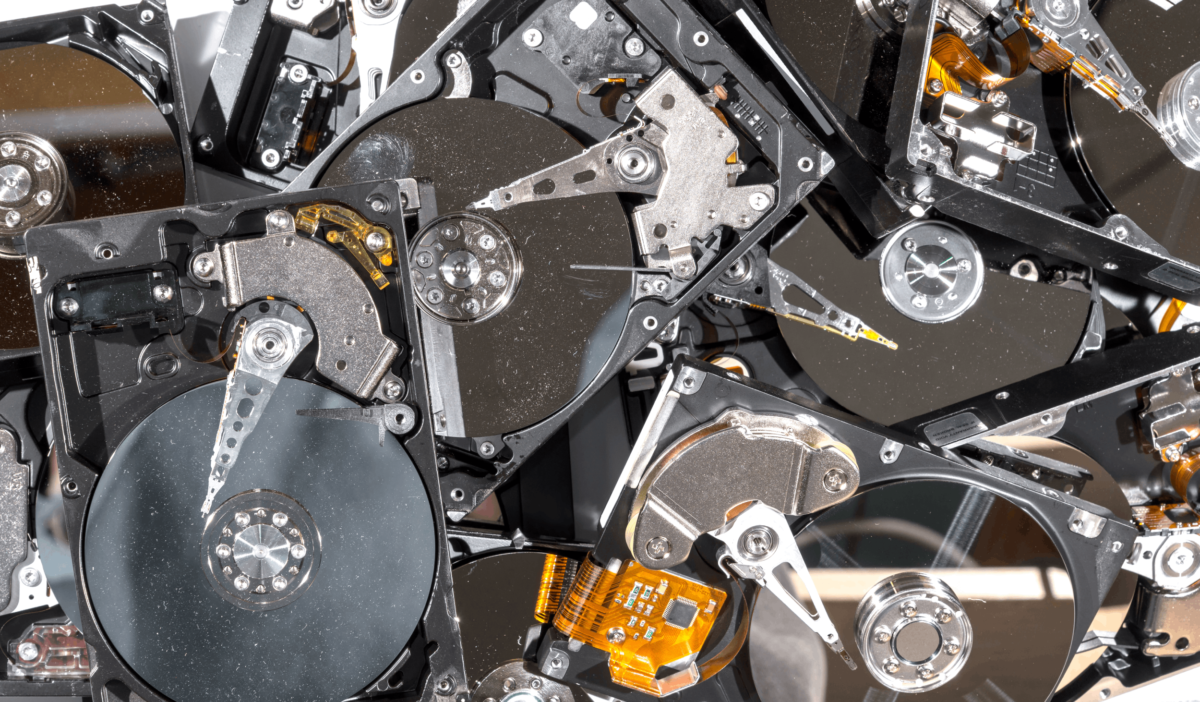Why Simply Deleting Files Isn’t Enough
June 12, 2020
When it comes to protecting sensitive information from getting into the wrong hands, shredding your paper documents is a no brainer at this point. From credit card fraud to identity theft, criminals can do some serious damage if they get their hands on this information.
But it doesn’t stop at just paper documents. Every day, roughly 2.5 quintillion bytes of data is created every single day. Now most of that isn’t sensitive information, but that is such an astronomical amount of data. Data gets saved in a variety of ways, but most commonly data is stored on computer hard drives.
If you’ve ever had to replace a computer or upgrade a hard drive in the past, you might have deleted all the files off your hard drive and called it a day. This simply isn’t enough as those files can still be retrieved again afterwards! That’s why The Shred Truck offers hard drive destruction to ensure no old hard drives are accessible again. To understand why we offer this service, let’s start by explaining what a hard drive is.

What Exactly Is A Hard Drive?
Hard disk drives (HDD) are a type of storage medium most commonly found in modern computers. This is where almost everything that makes a computer run is stored, as well as any images, videos, text documents, emails, etc. Programs and drivers for external devices like keyboards and printers are also stored here. Without the hard drive, your computer would only power on to show a BIOS screen.
You may find that your computers might contain Solid State Drives (SSD) instead of HDD’s. These take on the same function as older HDD’s, but have no moving parts, are smaller and faster at data processing. These are the same type of technology you see in a flash drive or a cell phones memory card.
How Is Data Stored
When you save a text document or download a picture from the internet, the data for that file needs to be saved onto the hard drive for when you want to retrieve it again. For hard disk drives, the process is quite interesting. The hard disk drive contains a disk called a platter where magnetic fields are written onto. The way these magnetic fields are written is what allows a computer to retrieve the information again.
Now, information isn’t just thrown into the hard drive without a second thought. The information needs to be retrievable again, after all. Hard drives are designed with organization in mind, and data is stored on the platter in circular tracks. In those tracks are what are referred to as sectors. Think of a sector as a specific shelf in your entire kitchen’s cabinetry.
When data is written to a sector, the fact that information is written there is also stored on the hard drive in the form of a map. When your computer goes to retrieve certain information, it checks that map first to find the information more quickly than just searching the whole hard drive. SSD’s work in a similar fashion, but is a little bit more difficult to explain.
What Happens When you Delete Files
Have you ever noticed that it’s a lot faster to delete a file from your computer than it is to download a new file, even if they are the same size? This is yet another brilliant stroke of engineering genius that simplifies data management on the hard drive, preserving it for a longer time. The saying goes “work smart, not hard” after all. However, this can be a cause of concern for anyone who thinks they’ve securely removed all their data from a hard drive.
When you select a text document or image on your computer and delete it, the file doesn’t get deleted immediately. Even if you go into the Recycling box and delete the items “permanently,” they aren’t truly deleted! Remember that map we talked about in the previous section? What happens when you delete a file is the reference to where that file is kept gets overwritten to say that sector is vacant.
After time, your computer will need to store more information onto the computer. When it refers to the map to find a vacant space to store data, it will overwrite anything in the sector that is labeled vacant. This is how a hard drive maintains efficiency to not overwork itself.
Destroy Old Hard Drives
If you delete the files from your computer, and stop using your hard drive, that data is kept saved on your hard drive, only the references are removed. Hackers with the right software can plug in your hard drive to their computer and manually search the sectors on your hard drive for interesting information, including all those sensitive documents you thought you destroyed.
That is where hard drive destruction comes in. When you physically destroy a hard drive, including it’s platter, the magnetic fields are lost and the hardware is completely unusable or repairable. This is the only 100% sure way to protect your customer or business data from being accessed from old hard drives.
Now that you know about why The Shred Truck offers hard drive destruction, give us a call to learn more about the process and to get a quote for any hard drives you need destroyed.
